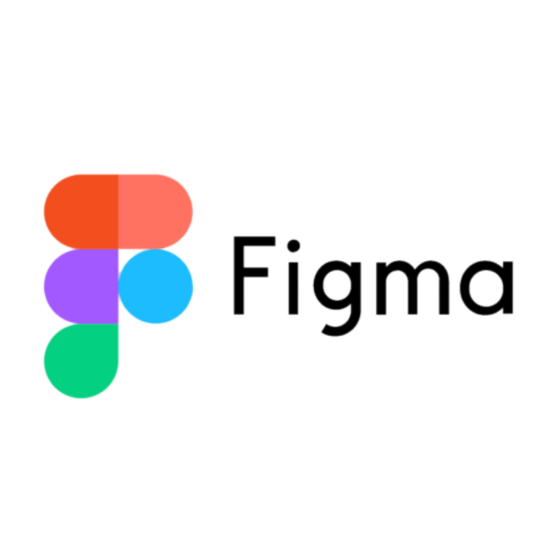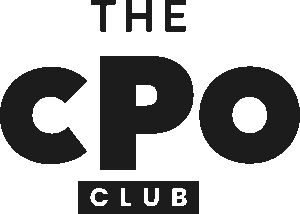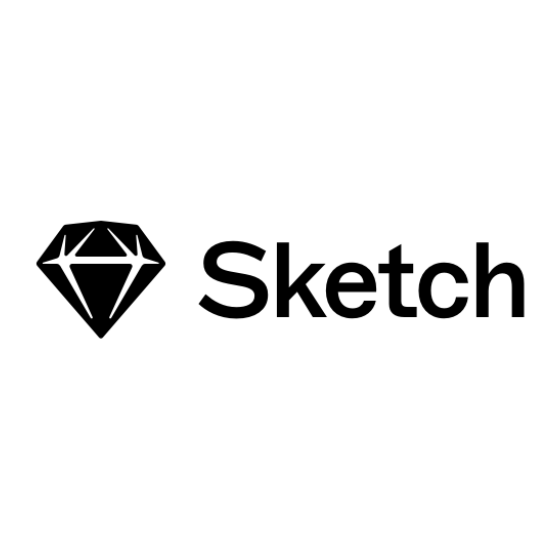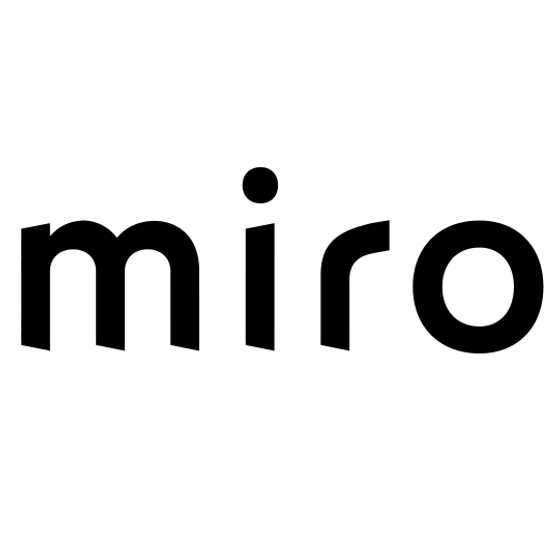10 Best Figma Alternatives Shortlist
Here's my pick of the 10 best software from the 26 tools reviewed.

Figma
Best for online design collaboration
- Price : From $15/user/month (billed annually)
- Trial : Free plan available
As a product manager, you face constant challenges in balancing design needs with team collaboration. Figma might be your go-to tool, but it doesn't always fit every business requirement. You might need an alternative that offers specialized features, better pricing, or improved integration with your existing software.
In my experience testing and reviewing software, I've found several Figma alternatives that could meet your unique needs. I aim to provide an unbiased review, focusing on what these tools offer and how they can help your team.
In this article, I'll guide you through the top choices, highlighting features, usability, and pricing. My goal is to help you find a tool that aligns with your team's goals and enhances your design process.
What Is Figma?
Figma is a UX design tool used for creating user interfaces and prototypes. It's popular among designers, product managers, and developers who value its collaborative features. Real-time collaboration, vector editing, and prototyping capabilities help you and your team work efficiently and creatively. Figma's overall value lies in its ability to facilitate teamwork and streamline the design process.
Why Look For A Figma Alternative?
Why Look For a Figma Alternative?
Figma is a popular web-based design platform for UI design and collaborative design, but it isn’t the perfect fit for everyone. Some teams and freelancers look for Figma competitors when they:
- Need offline access for remote or mobile app use
- Require more affordable pricing or a free version for small businesses and startups
- Want advanced animation tools for UI design and interactive prototypes
- Need stronger handoff features for developers
- Prefer an interface with a simpler learning curve
- Have specific data compliance needs or must work within a certain operating system
If these challenges sound familiar, exploring other design tool alternatives may be the right move. The options in my list are built to help design teams and stakeholders work more efficiently—without the constraints they’ve experienced in Figma.
Why Trust Our Software Reviews
We’ve been testing and reviewing product management software since 2020. As product managers ourselves, we know how critical and difficult it is to make the right decision when selecting software. We invest in deep research to help our audience make better software purchasing decisions.
We’ve tested more than 2,000 tools for different product management use cases and written over 1,000 comprehensive software reviews. Learn how we stay transparent and check out our software review methodology.
Best Figma Alternatives Summary
This comparison chart summarizes pricing details for my top Figma alternative selections to help you find the best one for your budget and business needs.
| Tool | Best For | Trial Info | Price | ||
|---|---|---|---|---|---|
| 1 | Best for fast wireframes with integrated flowcharts and sticky notes | Free plan available | From $10/user/month | Website | |
| 2 | Best for creating and sharing quick, no-code interactive prototypes | 7-day free trial + free plan available | From $16/user/month (billed annually) | Website | |
| 3 | Best for macOS design projects | 30-day free trial | From $10/user/month (billed annually) | Website | |
| 4 | Best for animation capabilities | 15-day free trial + free demo available | From $29/user/month | Website | |
| 5 | Best for Adobe ecosystem users | 30-day free trial | From $19.99/user/month (billed annually) | Website | |
| 6 | Best for software diagramming | 14-day free trial + free plan available | From $4.90/user/month (billed annually) | Website | |
| 7 | Best for complex UX prototypes | 30-day free trial | From $29/user/month (billed annually) | Website | |
| 8 | Best for visual feedback and project review in distributed teams | 30-day free trial | From €5/user/month (billed annually) | Website | |
| 9 | Best for simple sketch-style mockups | Free plan available | From $9/user/month | Website | |
| 10 | Best for real-time collaborative whiteboarding with workshop-ready templates | Free plan available | From $8/user/month (billed annually) | Website |
Best Figma Alternatives Reviews
Below are my detailed summaries of the best Figma alternatives that made it onto my shortlist. My reviews offer a detailed look at the key features, pros & cons, integrations, and ideal use cases of each tool to help you find the best one for you.
Whimsical
Best for fast wireframes with integrated flowcharts and sticky notes
Whimsical is a visual collaboration tool used by teams to create flowcharts, wireframes, and mind maps. It's designed for brainstorming and planning, providing a platform for visual thinking and idea organization.
Why it's a good Figma alternative: Whimsical’s software diagramming offers features that make it perfect for mapping out processes and systems. Its intuitive interface allows your team to create flowcharts and wireframes with ease, supporting quick idea generation.
Additionally, the tool's mind mapping capabilities also help you visualize connections between concepts, enhancing your team's brainstorming sessions. If diagramming and visual planning are your focus, Whimsical provides the necessary tools.
Standout features & integrations:
Features include mind mapping that helps visualize connections, flowchart creation for process mapping, and wireframing tools that support rapid prototyping.
Integrations include Slack, Jira, GitHub, Microsoft Teams, Google Drive, Trello, Confluence, Notion, Asana, and Dropbox.
Pros and cons
Pros
- Easy flowchart creation
- Supports quick idea generation
- Ideal for visual collaboration
Cons
- May lack advanced design features
- Limited to visual planning
Marvel
Best for creating and sharing quick, no-code interactive prototypes
Marvel is a design and prototyping tool used by designers and teams to create and test interactive prototypes quickly. It facilitates the design process from wireframing to user testing without the need for coding.
Why it's a good Figma alternative: Marvel is ideal for rapid prototyping, allowing your team to create interactive prototypes swiftly. Its user testing feature helps gather feedback early in the design process, which can be helpful for iterative design.
With Marvel’s intuitive interface, it is simple for your team to jump in and start working without extensive training. If speed and ease of use are priorities, Marvel offers the tools to meet those needs.
Standout features & integrations:
Features include an intuitive interface that simplifies the design process, a user testing feature that provides valuable feedback, and wireframing capabilities that help you start projects quickly.
Integrations include Sketch, Dropbox, Slack, Jira, Confluence, Trello, Microsoft Teams, Google Drive, and Zapier.
Pros and cons
Pros
- Supports user testing
- Intuitive interface
- Rapid prototyping capabilities
Cons
- Not ideal for complex projects
- Limited advanced features
Sketch
Best for macOS design projects
Sketch is a design tool primarily used by macOS-based designers for creating user interfaces and prototypes. It offers vector editing, collaboration, and design systems features to support creative workflows.
Why it's a good Figma alternative: Sketch is designed specifically for macOS users, providing a native experience that integrates smoothly with Apple's ecosystem. It offers advanced vector editing tools, which are essential for precision in design projects.
The platform’s shared libraries feature allows your team to maintain consistency across projects. If your team relies on macOS, Sketch aligns perfectly with your design environment.
Standout features & integrations:
Features include vector editing for precise designs, shared libraries that ensure consistency, and artboards that let you manage multiple design iterations in one place.
Integrations include Zeplin, Abstract, Avocode, Marvel, Flinto, Proto.io, Principle, and Origami Studio.
Pros and cons
Pros
- Multiple artboard management
- Consistent shared libraries
- Advanced vector editing
Cons
- May lack cross-platform capabilities
- No real-time collaboration
Proto.io
Best for animation capabilities
Proto.io is a prototyping tool used by designers and product teams to create interactive prototypes with rich animations. It helps visualize user experiences and test ideas without coding.
Why it's a good Figma alternative: Proto.io excels in creating animations and interactive prototypes, making it a great choice if your team needs to visualize complex user interactions. Its timeline animations feature helps you bring your ideas to life with detailed animations.
The drag-and-drop interface allows for quick prototyping, reducing the time spent on creating interactions. If animation is a priority for your projects, Proto.io provides the tools to achieve that effectively.
Standout features & integrations:
Features include a drag-and-drop interface that simplifies the prototyping process, timeline animations for creating detailed interactions, and a user testing feature to gather feedback on your prototypes.
Integrations include Sketch, Adobe XD, Figma, Google Fonts, Dropbox, Slack, and Jira.
Pros and cons
Pros
- Quick prototyping process
- No coding required
- Supports user testing
Cons
- May not suit all design needs
- Limited to prototyping
Adobe XD
Best for Adobe ecosystem users
Adobe XD is a UX design and prototyping tool used mainly by designers and developers who are part of the Adobe ecosystem. It supports the creation of user interfaces and interactive prototypes for web and mobile applications.
Why it's a good Figma alternative: Adobe XD integrates with other Adobe products, making it ideal if your team already uses Adobe Creative Cloud. The tool offers features like real-time collaboration and cloud document management, which help keep your projects in sync across devices.
Its user-friendly interface and compatibility with Adobe apps enhance productivity and workflow. This makes Adobe XD a practical choice for teams heavily invested in Adobe's suite of tools.
Standout features & integrations:
Features include real-time collaboration that ensures everyone's on the same page, cloud document management for easy access across devices, and offline work capabilities with automatic syncing when you’re back online.
Integrations include Adobe Photoshop, Adobe Illustrator, Adobe After Effects, Adobe Creative Cloud Libraries, and Slack.
Pros and cons
Pros
- Supports interactive prototypes
- Real-time collaboration
- Seamless Adobe integration
Cons
- May not suit all design needs
- Limited non-Adobe integrations
Sketchboard
Best for software diagramming
Sketchboard is an online collaborative whiteboard tool primarily used by teams for software diagramming and visual collaboration. It's designed for brainstorming and problem-solving, offering an infinite canvas for creative work.
Why it's a good Figma alternative: Sketchboard is tailored for software diagramming, which sets it apart from Figma. Its real-time collaboration feature allows your team to work together efficiently, while the extensive library of over 400 sketch shapes helps visualize complex ideas. The user-friendly interface ensures easy navigation for all team members, fostering creativity and teamwork in a way that's unique to Sketchboard.
Standout features & integrations:
Features include real-time collaboration that keeps your team connected, an extensive library of sketch shapes to visualize ideas, and an infinite canvas that allows for unrestricted brainstorming.
Integrations include Microsoft Teams, Slack, GitHub, Webex, and Google Drive.
Pros and cons
Pros
- Infinite brainstorming canvas
- Extensive sketch shape library
- Real-time collaboration
Cons
- Not ideal for all design types
- Limited design customization
Axure RP
Best for complex UX prototypes
Axure RP is a prototyping and wireframing tool mainly used by UX professionals to create detailed wireframes and interactive prototypes. It supports advanced prototyping features that facilitate complex design projects.
Why it's a good Figma alternative: Axure RP excels in creating highly detailed wireframes and prototypes, which makes it ideal for UX professionals. It offers advanced conditional logic and dynamic content, allowing your team to create interactive and realistic prototypes.
The tool also supports detailed documentation, which helps in maintaining detailed design records. If your projects require depth and complexity, Axure RP provides the necessary tools to handle them effectively.
Standout features & integrations:
Features include advanced conditional logic that adds interactivity to prototypes, dynamic content for creating realistic user experiences, and thorough documentation to keep track of design details.
Integrations include Jira, Confluence, Slack, Microsoft Teams, and Axure Cloud.
Pros and cons
Pros
- Ideal for UX professionals
- Supports complex interactions
- Detailed wireframe capabilities
Cons
- Can be overwhelming for beginners
- Limited to UX-specific use cases
Conceptboard
Best for visual feedback and project review in distributed teams
Conceptboard is a collaborative online whiteboard tool designed for teams to brainstorm, plan, and execute projects together. Remote teams widely use it for visual collaboration and project management.
Why it's a good Figma alternative: Conceptboard excels in remote team collaboration, providing tools that make it easy for your team to work together from different locations. Its real-time collaboration feature ensures that everyone can contribute and stay engaged in discussions.
Moreover, Conceptboard’s infinite canvas allows for expansive brainstorming sessions, giving your team the space to explore ideas without constraints. If your focus is on collaboration and remote teamwork, Conceptboard offers the necessary functionality.
Standout features & integrations:
Features include real-time collaboration that keeps your team connected, an infinite canvas for extensive brainstorming, and visual project management tools that help organize tasks and ideas.
Integrations include Microsoft Teams, Slack, Trello, Google Drive, Dropbox, Jira, Confluence, Microsoft OneDrive, Asana, and Zoom.
Pros and cons
Pros
- Extensive brainstorming capabilities
- Supports real-time teamwork
- Ideal for remote collaboration
Cons
- Learning curve for new users
- Limited advanced design features
Ziteboard
Best for simple sketch-style mockups
Ziteboard is an online whiteboard tool used by teams for visual collaboration and brainstorming. It's designed to facilitate software diagramming and idea sharing in real time.
Why it's a good Figma alternative: Ziteboard is particularly suited for software diagramming, offering features that help your team map out complex processes. The infinite canvas allows for extensive brainstorming sessions without limitations.
Its real-time collaboration ensures that everyone can contribute and stay engaged during discussions. If your priority is diagramming and collaborative planning, Ziteboard delivers the necessary functionality.
Standout features & integrations:
Features include an infinite canvas for expansive brainstorming, real-time collaboration to keep your team connected, and drawing tools that help visualize ideas effectively.
Integrations include Slack, Google Drive, Dropbox, Microsoft Teams, Trello, Jira, Asana, Zoom, GitHub, and Confluence.
Pros and cons
Pros
- Real-time collaboration features
- Supports extensive brainstorming
- Ideal for visual collaboration
Cons
- Not suited for detailed prototyping
- Limited advanced design features
Miro
Best for real-time collaborative whiteboarding with workshop-ready templates
Miro is a collaborative online whiteboard platform used by teams to brainstorm, plan, and collaborate on projects. It's popular among product managers, designers, and developers for visualizing workflows and creating diagrams.
Why it's a good Figma alternative: Miro excels in software diagramming, making it ideal if your team needs to map out complex processes and systems. The infinite canvas allows for unrestricted brainstorming and planning, giving your team the space to visualize ideas in detail.
Its real-time collaboration feature ensures everyone stays connected and engaged in the creative process. If diagramming and team collaboration are priorities, Miro provides the tools to support these activities effectively.
Standout features & integrations:
Features include an infinite canvas that allows for expansive brainstorming, pre-built templates that help you get started quickly, and real-time collaboration that keeps your team engaged.
Integrations include Slack, Microsoft Teams, Jira, Trello, Asana, Dropbox, Google Drive, Zoom, Confluence, and Microsoft OneDrive.
Pros and cons
Pros
- Pre-built templates available
- Supports complex diagramming
- Infinite canvas for brainstorming
Cons
- Complexity may exceed some needs
- Can be overwhelming for new users
Other Figma Alternatives
Here are some additional Figma alternatives that didn’t make it onto my shortlist, but are still worth checking out:
- Lucidspark
For structured brainstorming with voting, timers, and breakout boards
- Framer
For interactive website prototypes
- Penpot
For open-source design
- UXPin
For code-based design
- Canva
For non-designers
- MockFlow
For UI planning
- Justinmind
For clickable wireframes with integrated user testing tools
- Balsamiq
For low-fidelity wireframes
- Ziflow
For design approvals
- Visily
For AI-assisted design
- Moqups
For quick, browser-based mockups and diagrams in one workspace
- Webflow
For live responsive websites
- Origami Studio
For high-fidelity prototypes with native mobile transitions and gestures
- GoVisually
For visual feedback
- CorelDRAW Graphics Suite
For vector illustration
- Overflow
For user flow diagrams
Figma Alternatives Selection Criteria
When selecting the best Figma alternatives to include in this list, I considered common buyer needs and pain points related to UX design tool products, like collaboration capabilities and ease of use. I also used the following framework to keep my evaluation structured and fair:
Core Functionality (25% of total score)
To be considered for inclusion in this list, each solution had to fulfill these common use cases:
- Create wireframes
- Develop prototypes
- Facilitate design collaboration
- Support vector editing
- Enable user testing
Additional Standout Features (25% of total score)
To help further narrow down the competition, I also looked for unique features, such as:
- Real-time collaboration
- Advanced animation tools
- AI-assisted design elements
- Customizable design systems
- Offline capabilities
Usability (10% of total score)
To get a sense of the usability of each system, I considered the following:
- Intuitive interface
- Learning curve
- Accessibility features
- Efficiency in design tasks
- Customization options
Onboarding (10% of total score)
To evaluate the onboarding experience for each platform, I considered the following:
- Availability of training videos
- Interactive product tours
- Access to templates
- Webinars and live demos
- Chatbot support
Customer Support (10% of total score)
To assess each software provider’s customer support services, I considered the following:
- Response time
- Availability of live chat
- Help center resources
- Quality of support documentation
- Community forums
Value For Money (10% of total score)
To evaluate the value for money of each platform, I considered the following:
- Competitive pricing
- Feature set offered
- Flexibility of pricing plans
- Discounts for teams or education
- Free trial or demo availability
Customer Reviews (10% of total score)
To get a sense of overall customer satisfaction, I considered the following when reading customer reviews:
- Overall satisfaction scores
- Feedback on features
- Reports on reliability
- Ease of integration
- Quality of customer service
Figma Key Features
Here are some of the key features of Figma to help you contrast and compare what alternative solutions offer:
- Real-time collaboration: Multiple users can work on the same design simultaneously, enhancing teamwork and communication.
- Auto-layout: Facilitates responsive design by automatically resizing and repositioning elements based on available space.
- Design systems: Support the creation and management of reusable components and styles for consistency across projects.
- Prototyping tools: Enable designers to create interactive prototypes to visualize user flows and interactions.
- Version control: Keeps track of design changes, allowing users to revert to previous versions if needed.
- Plugins and integrations: Offers a variety of plugins to extend functionality and integrate with other tools.
- FigJam: A virtual whiteboard for workshops and brainstorming sessions, enhancing collaborative creativity.
- Cross-platform compatibility: Works on both Mac and Windows, making it versatile for different users.
- Smart selection: Enables bulk adjustments to multiple design elements, speeding up repetitive tasks.
- UI kits: Provide a library of pre-made components and styles for quick mockup creation.
What’s Next:
If you're in the process of researching UX design tools, connect with a SoftwareSelect advisor for free recommendations.
You fill out a form and have a quick chat where they get into the specifics of your needs. Then you'll get a shortlist of software to review. They'll even support you through the entire buying process, including price negotiations.





















